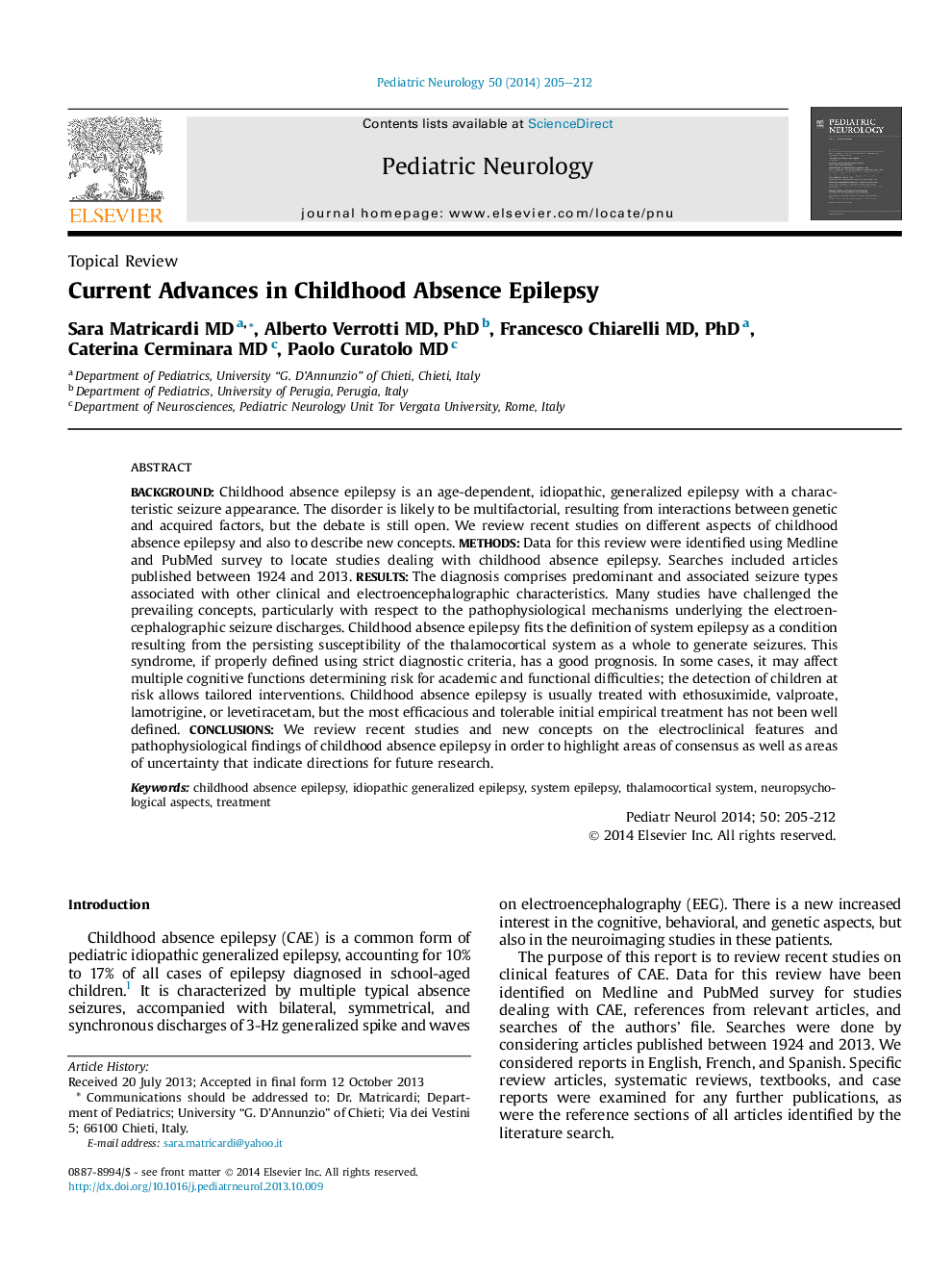| Article ID | Journal | Published Year | Pages | File Type |
|---|---|---|---|---|
| 3084915 | Pediatric Neurology | 2014 | 8 Pages |
BackgroundChildhood absence epilepsy is an age-dependent, idiopathic, generalized epilepsy with a characteristic seizure appearance. The disorder is likely to be multifactorial, resulting from interactions between genetic and acquired factors, but the debate is still open. We review recent studies on different aspects of childhood absence epilepsy and also to describe new concepts.MethodsData for this review were identified using Medline and PubMed survey to locate studies dealing with childhood absence epilepsy. Searches included articles published between 1924 and 2013.ResultsThe diagnosis comprises predominant and associated seizure types associated with other clinical and electroencephalographic characteristics. Many studies have challenged the prevailing concepts, particularly with respect to the pathophysiological mechanisms underlying the electroencephalographic seizure discharges. Childhood absence epilepsy fits the definition of system epilepsy as a condition resulting from the persisting susceptibility of the thalamocortical system as a whole to generate seizures. This syndrome, if properly defined using strict diagnostic criteria, has a good prognosis. In some cases, it may affect multiple cognitive functions determining risk for academic and functional difficulties; the detection of children at risk allows tailored interventions. Childhood absence epilepsy is usually treated with ethosuximide, valproate, lamotrigine, or levetiracetam, but the most efficacious and tolerable initial empirical treatment has not been well defined.ConclusionsWe review recent studies and new concepts on the electroclinical features and pathophysiological findings of childhood absence epilepsy in order to highlight areas of consensus as well as areas of uncertainty that indicate directions for future research.
